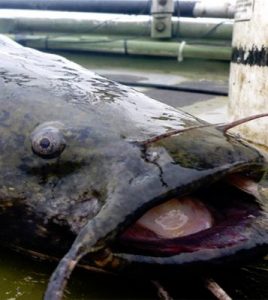DNA Barcoding Helps Smithsonian Researchers Dissect Diets Of Invasive Catfish
By analyzing the stomach contents of invasive blue and flathead catfish in Virginia tidewaters, scientists at the Smithsonian Institution are finding clues to the types of native fish they are snacking on, according to a blog post. The findings could help inform management plans in the future to mitigate the invasive fishes’ impacts.
The problem with that approach is that it’s sometimes difficult to tell what things the fish have eaten just by looking at them.
“You may get a chunk of flesh on a bit of spine, and you know it was a fish, but not what [fish] it was,” said Robert Aguilar, a biologist at the Smithsonian’s Environmental Research Center, in the blog.
To get around that issue, he and others use an approach called DNA barcoding. This centers on taking samples of the unidentified remains and sequencing then amplifying them. By leveraging that approach, researchers say they have been able to identify up to 88 percent of what the invasive catfish typically eat.
Researchers have found that many of the highly digested samples they’ve analyzed contain species of conservation and management concern, including striped bass and white perch or American shad, alewife and blueback herring.
Results of their analysis can be found in the scientific journal Environmental Biology of Fishes.

Flathead catfish. (Credit: U.S. Fish and Wildlife Service)

0 comments